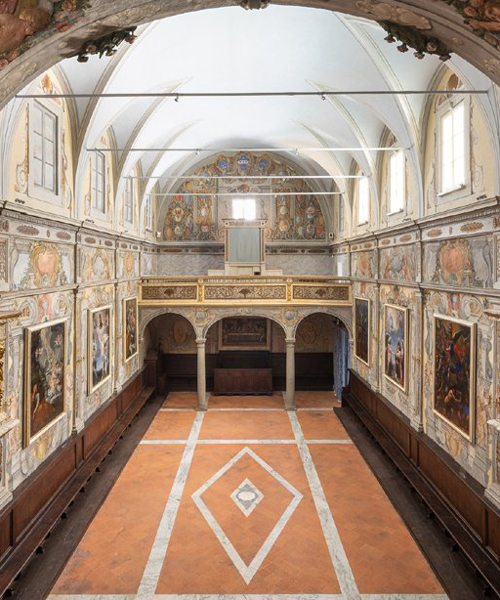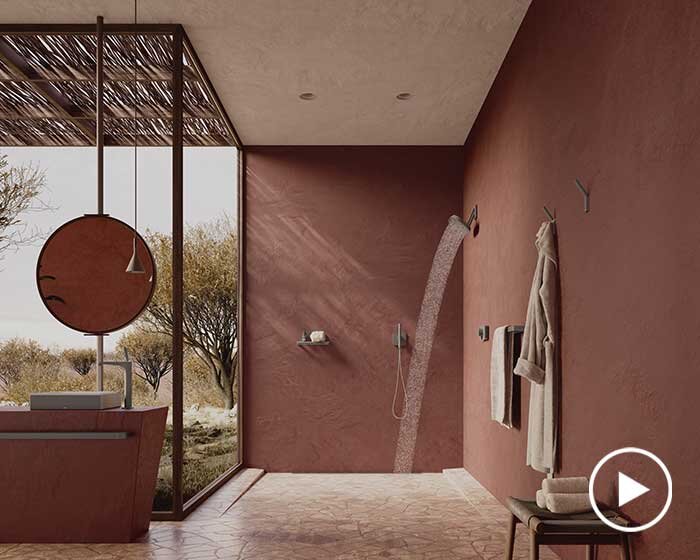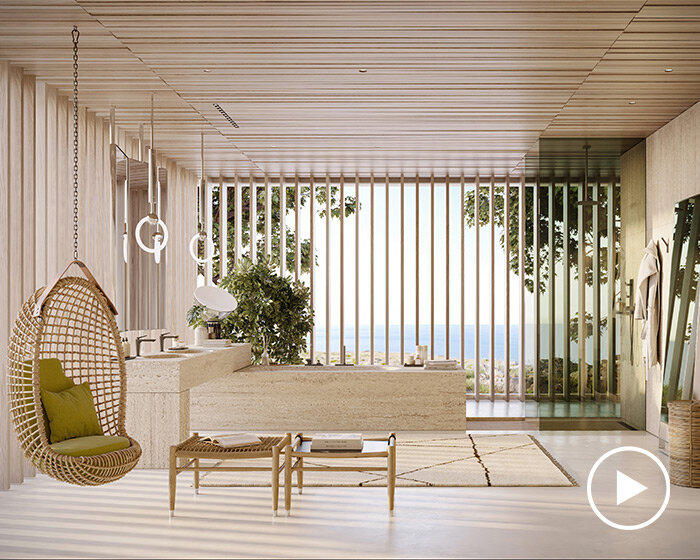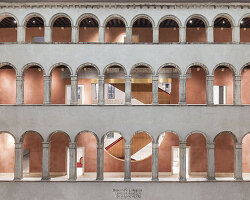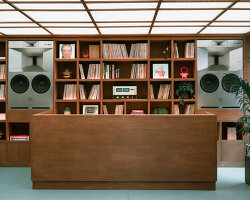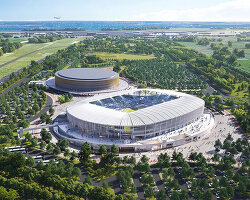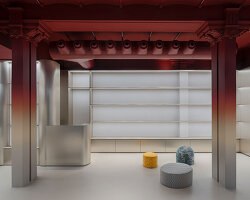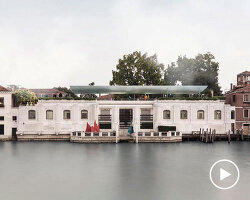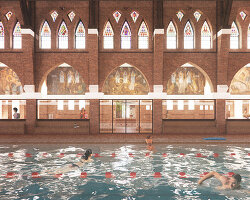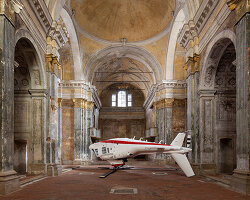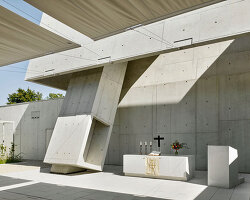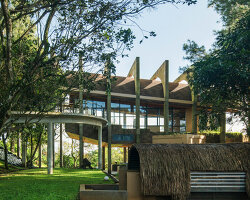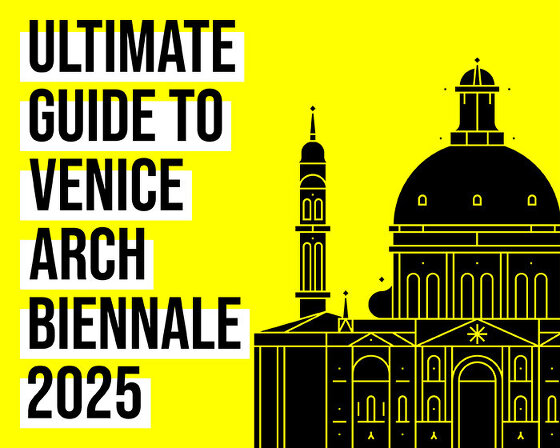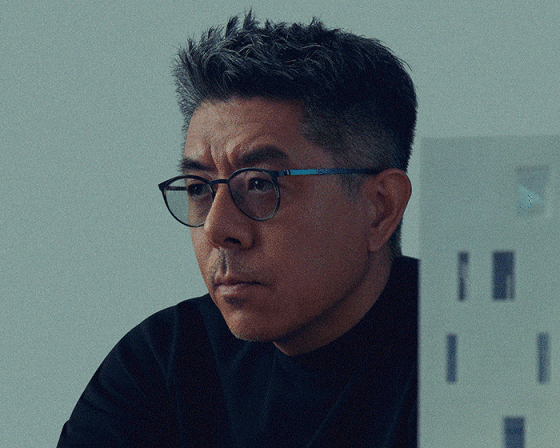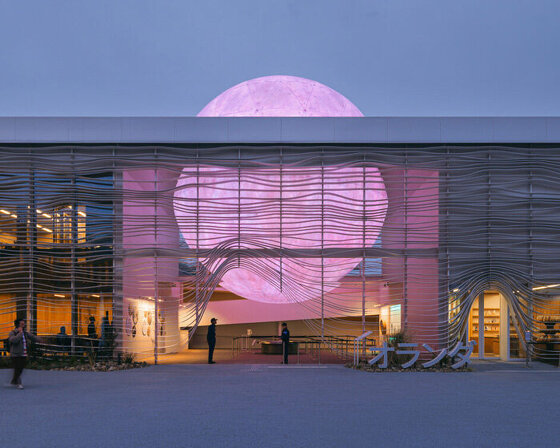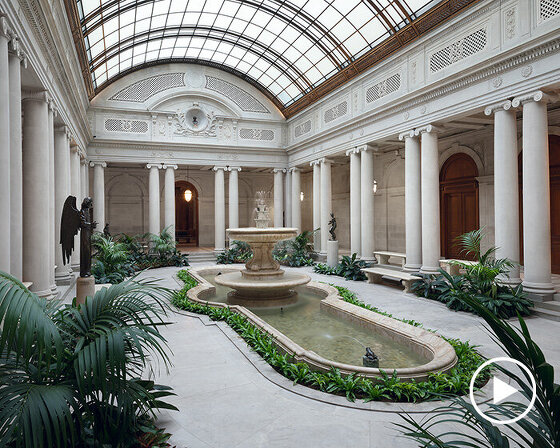in the historic center of lucca, an oratory has been meticulously restored by italian architecture studio, MICROSCAPE. first built in 1638, the oratory of the guardian angels is adorned with rich baroque frescoes, stucco-work and paintings, which were carried out between the mid-17th and early 18th centuries. over the years, the small chapel has become known for its splendid acoustics, making it a special place to compose, rehearse and record musical scores, and put on performances.
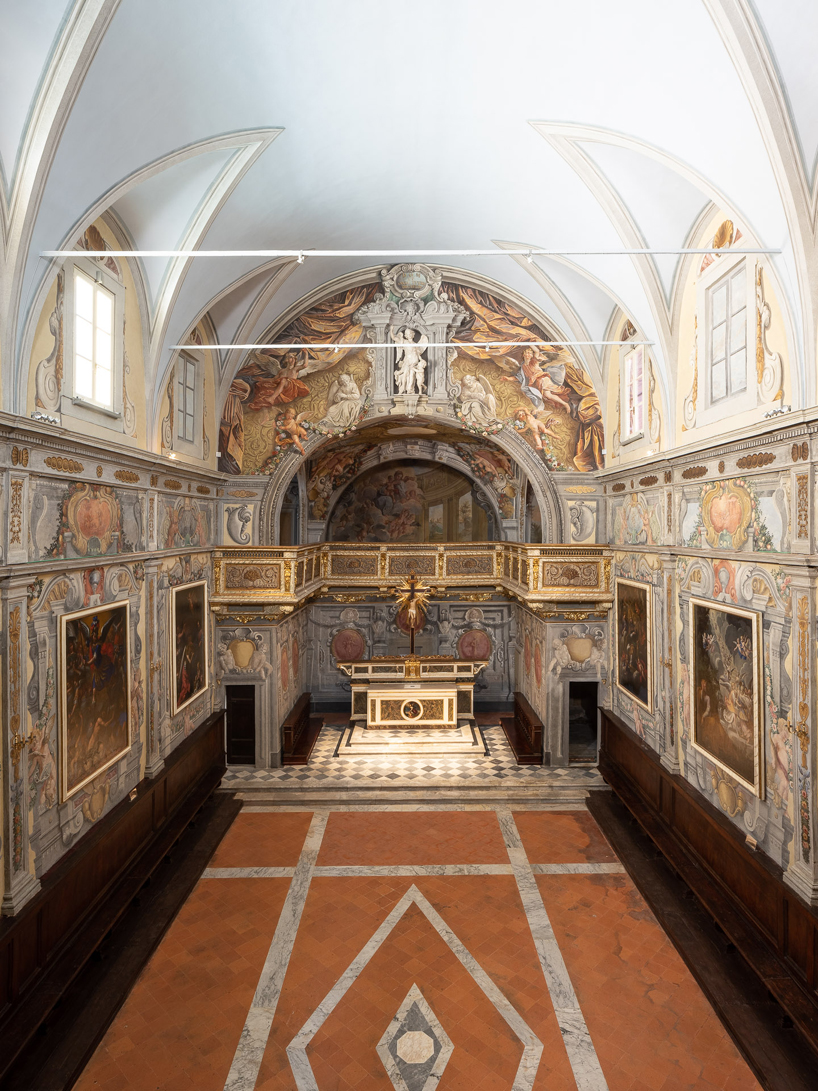
the oratory hall – an explosion of color and harmony
all images © filippo poli
unfortunately, due to the infiltration of rainwater over recent years from the roof of the adjacent officina degli artigianelli, the frescoes on the south wall were in a bad state of repair. moreover, the sacristy had been transformed into a makeshift dressing room for the artists invited to perform in the oratory, and there was no space to accommodate an audience. the lighting was low and uneven. the uncovered inner courtyard and the two stone stairways leading to the choirs were in an advanced state of decay and abandonment.
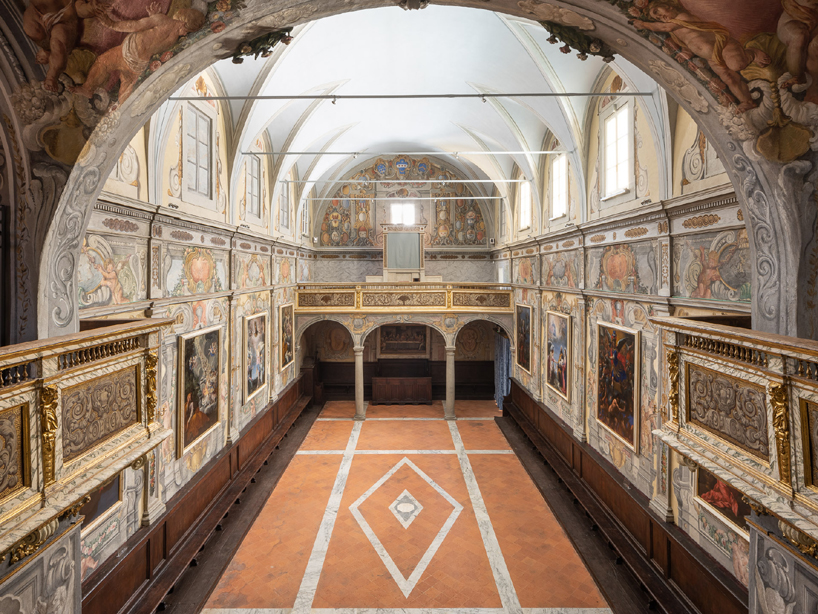
the pictorial works of the oratory are a classic example of rich baroque decoration
in this recent intervention by MICROSCAPE, the oratory has undergone a systematic restoration of all the painted decorations, the wooden decorations and the 18th-century organ. at the same time, all the technological additions were removed thanks to a new LED lighting system that is now fixed onto the wall cornice. the roof has been renovated and the thermal performance improved. the exterior plasterwork and paintwork have also been redone.
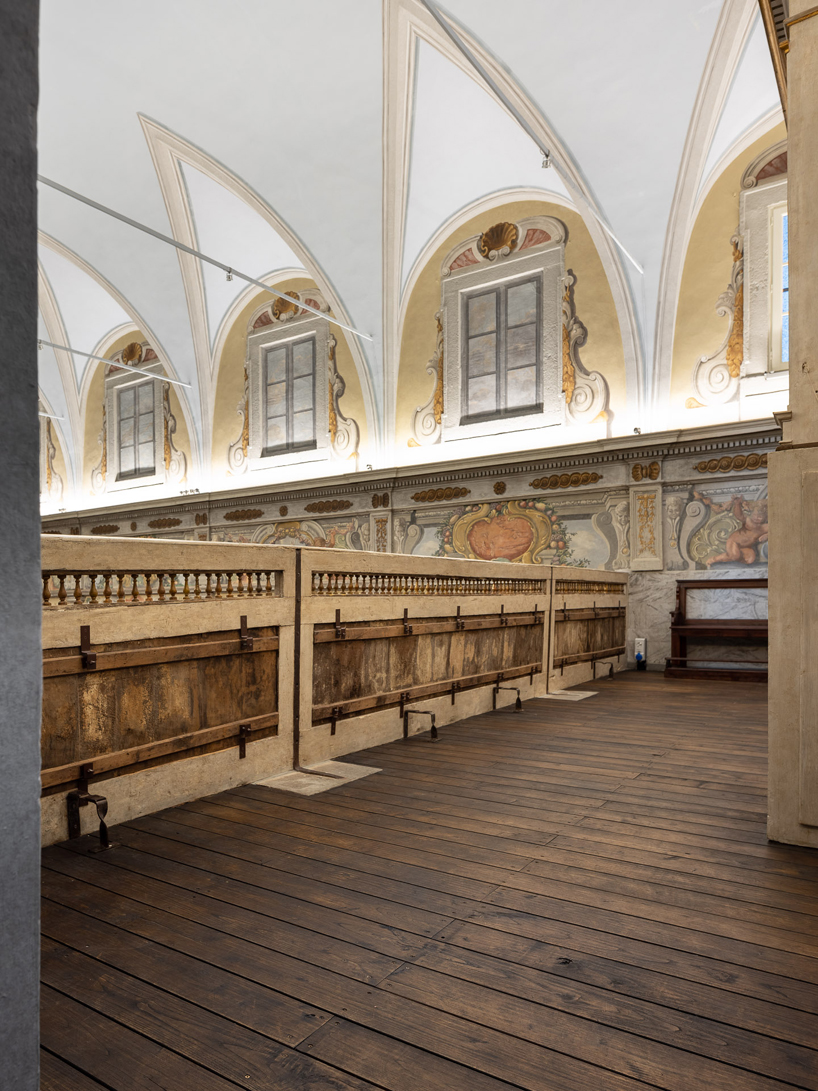
view from the one of the two choirs – the new LED lighting system is fixed onto the wall cornices
the inner courtyard is now covered with a light steel frame and sheets of opal glass. the two flights of preexisting stairs in grey sandstone have undergone conservative restoration. the new walking surface has three large steps that connect the two levels of the entrance to the former sacristy. the covered courtyard has been furnished with a swivelling wooden desk that serves as a streamlined ticket counter.
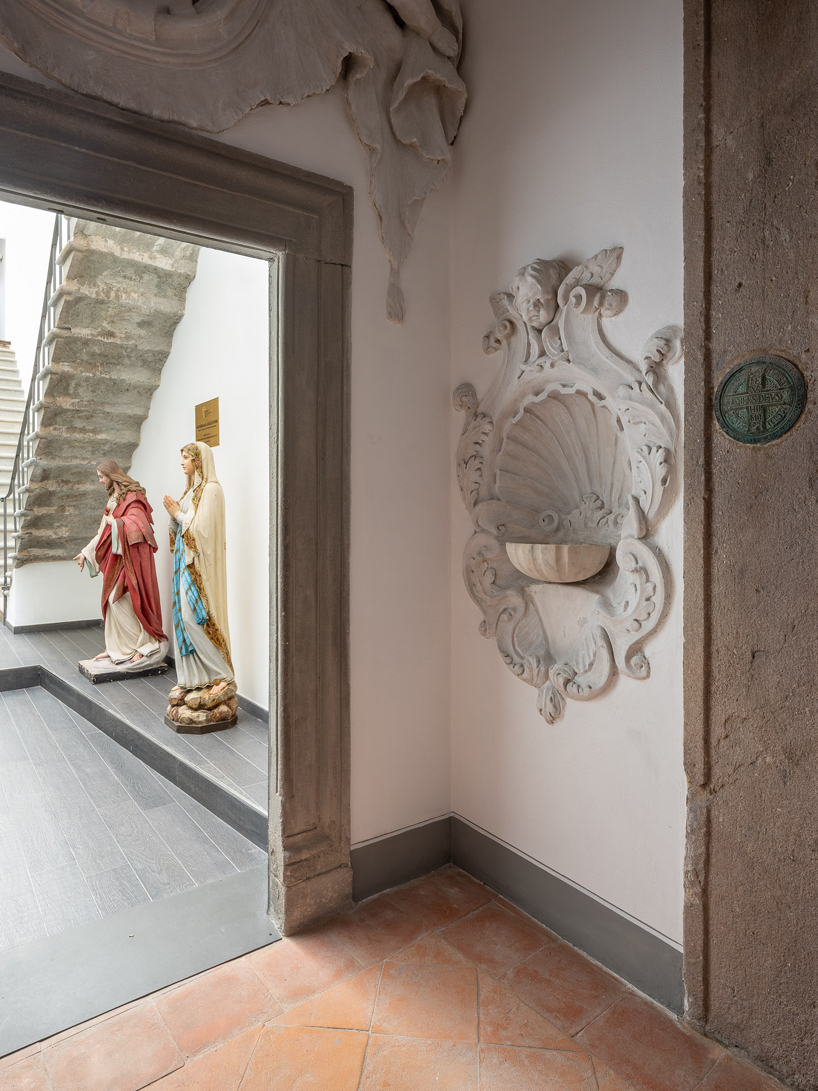
detail of the entrance, with some of the original sacred furnishings
the lighting system consists of simple LED strips that are recessed into the glass roof. from the covered courtyard a ramp leads to toilet facilities for the spectators and dressing rooms for the artists. the new system of ‘pleated’ walls identifies the doorways to the dressing rooms and toilets as well as creating two seats along the circulation corridor.

the inner courtyard is covered with a glass roof, which conceals simple LED strip lighting
in the corridor, the light fixtures are recessed into the black ceiling, just as with the dressing rooms. in the two dressing rooms, linear lamps alternate with mirrors. a third room is used as a meeting room, and here the black ceiling and linear light fixtures placed in the corners of the space create an inviting and intimate place where artists and musical technicians can gather before going on stage. the dressing room area connects with the oratory hall through a doorway connecting to the former sacristy.
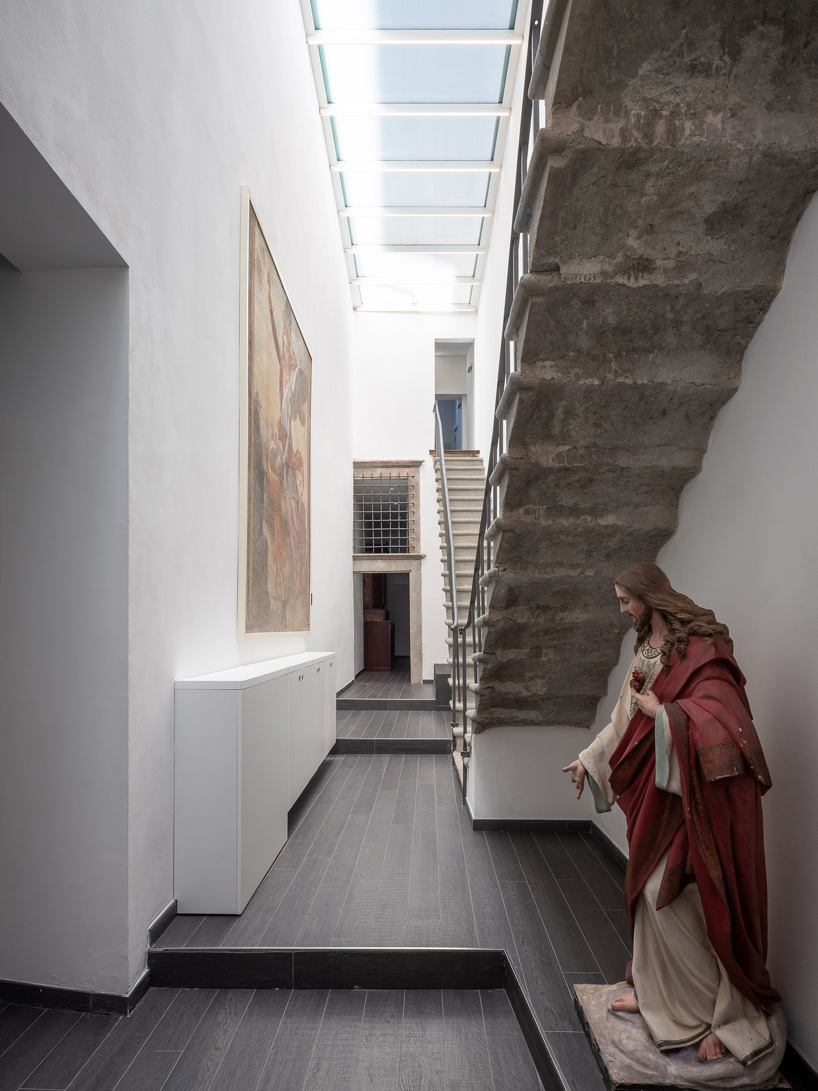
three large steps connect the two levels of the entrance to the former sacristy
the original sacred furnishings, discovered during the work, have been recovered and rearranged in the new spaces attached to the large hall of the oratory. they accompany the visitor as they explore the new spaces, starting with the fresco (which was removed in 1975) depicting the guardian angel with child, at one time located above the entrance door of the main façade, which was placed in the new covered courtyard. on the façade, a digital reproduction of it printed on aluminium reconstructs the original composition of the entrance.
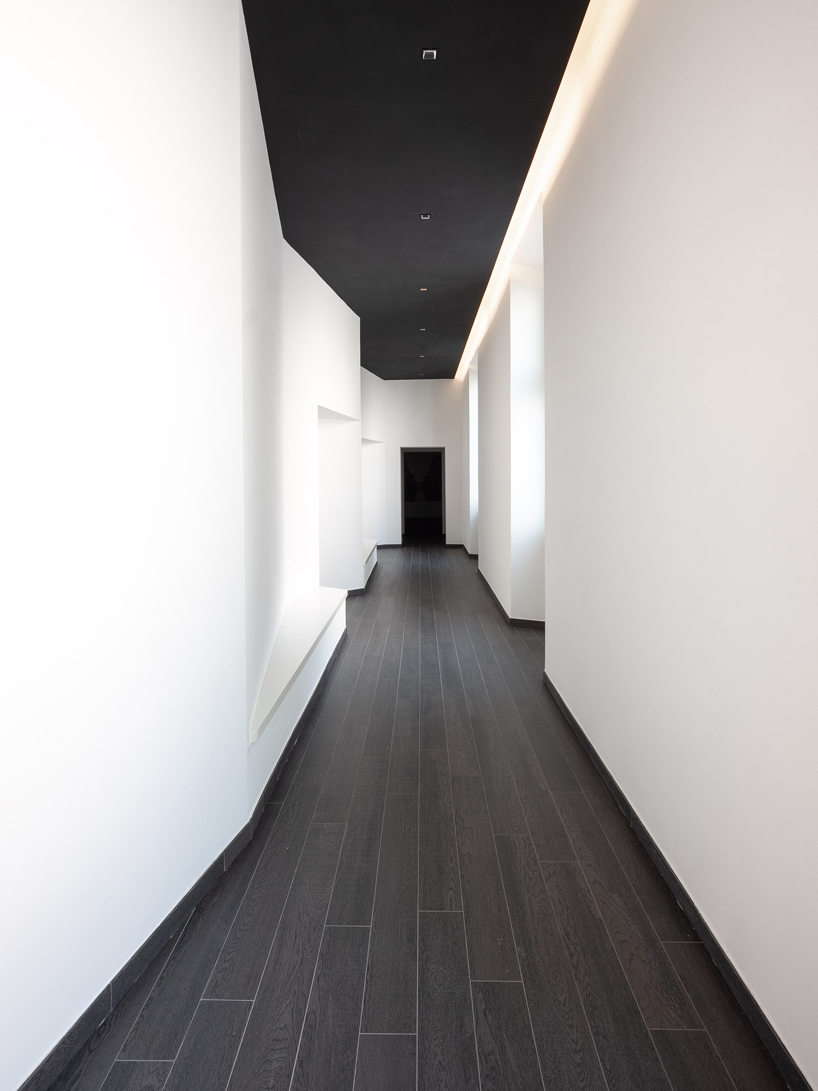
the new system of ‘pleated’ walls identifies the doorways to the dressing rooms and toilets as well as creating two seats along the circulation corridor
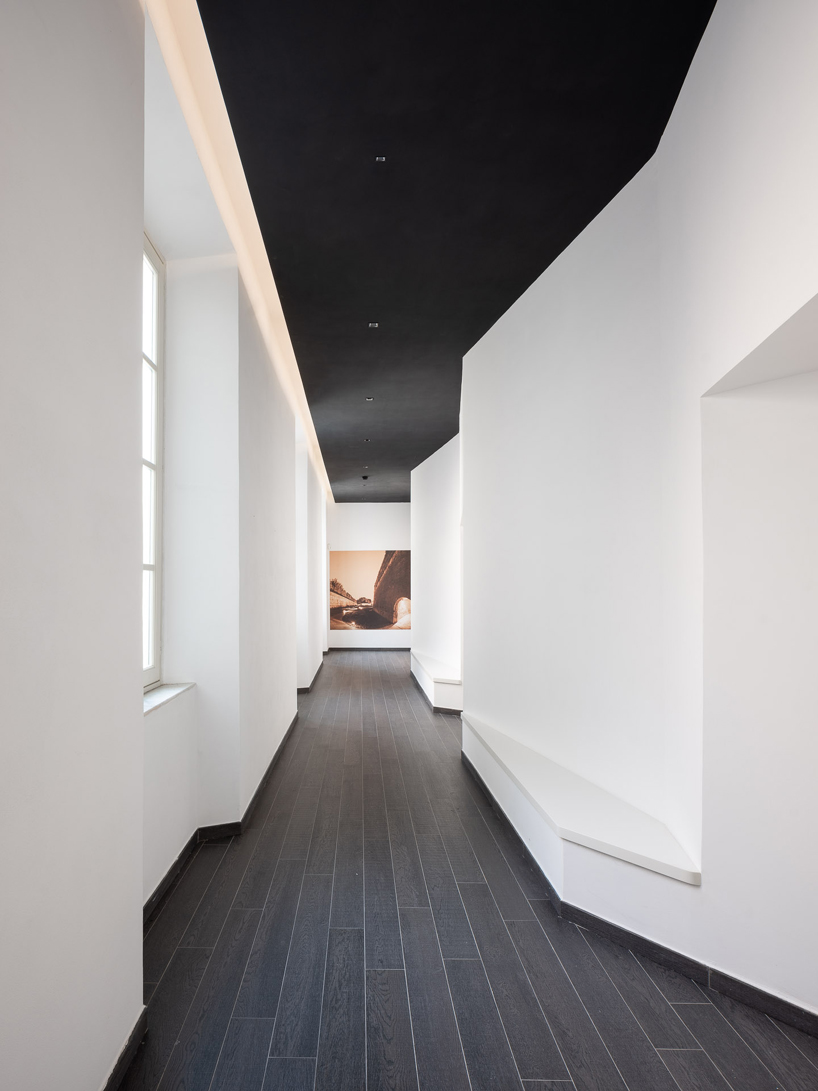
light fixtures are recessed into the black ceiling, just as with the dressing rooms
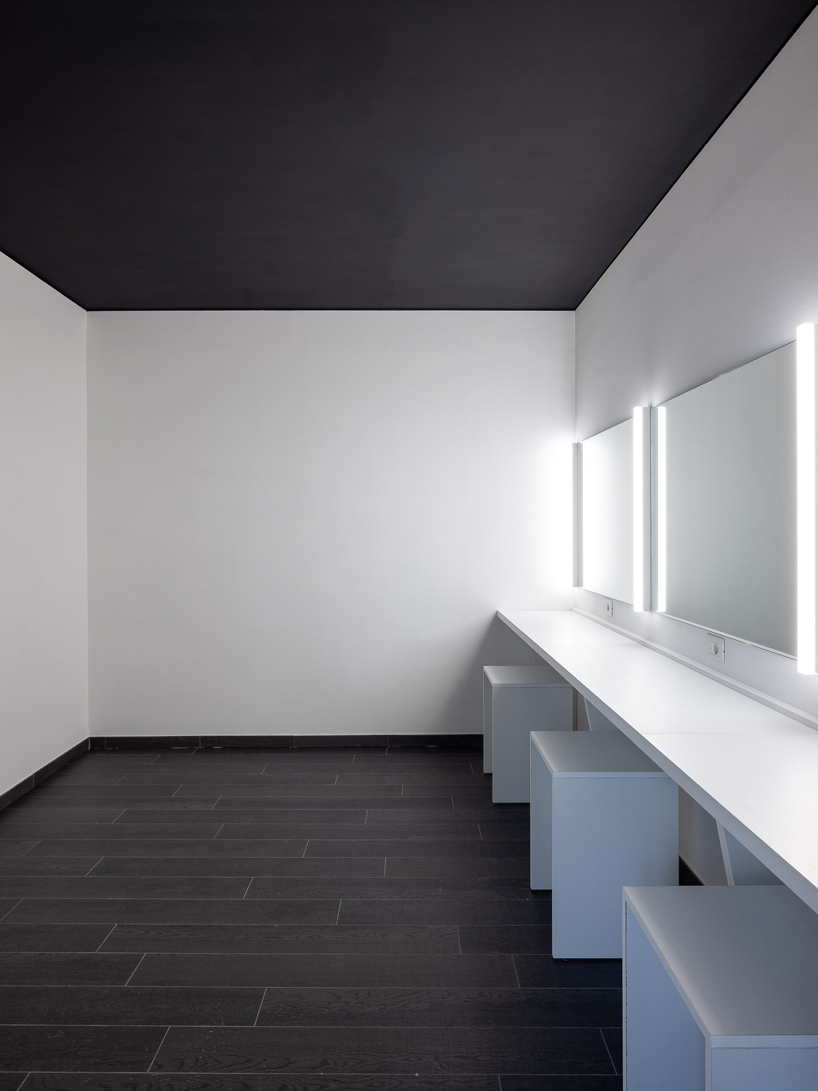
in the two dressing rooms linear lamps alternate with mirrors
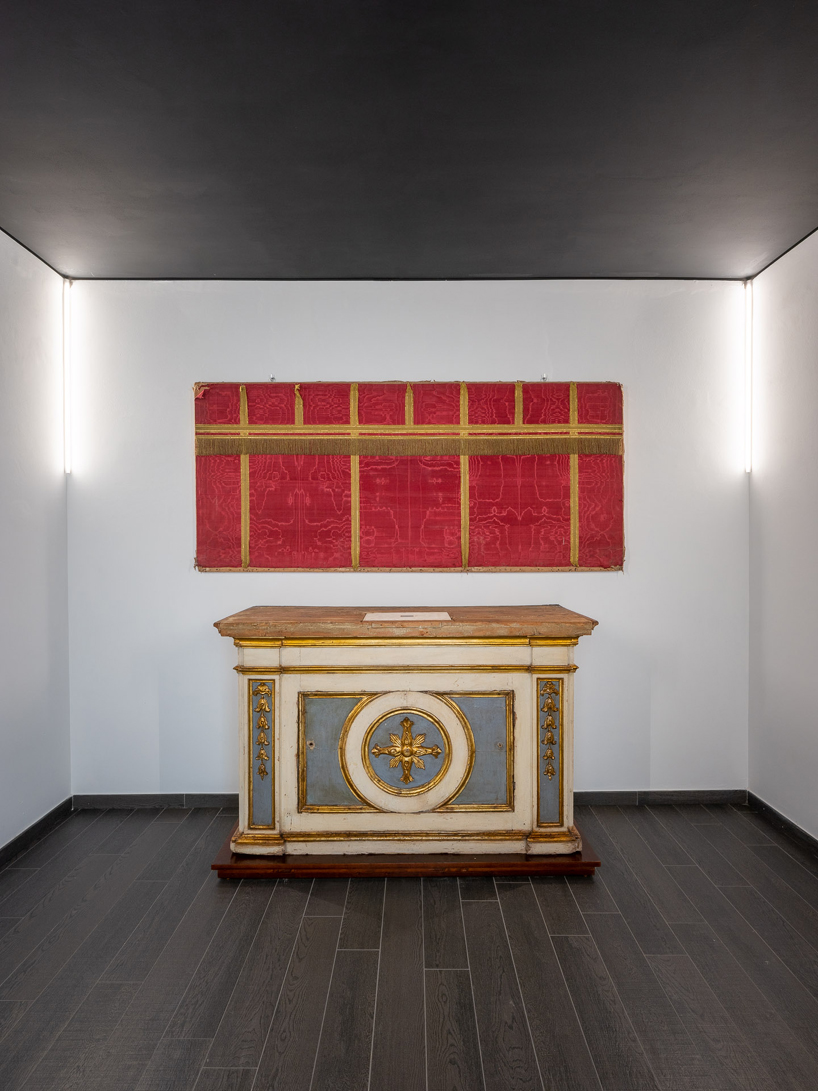
the meeting room: the black ceiling and linear light fixtures create an intimate space where artists and technicians can gather before going to the stage
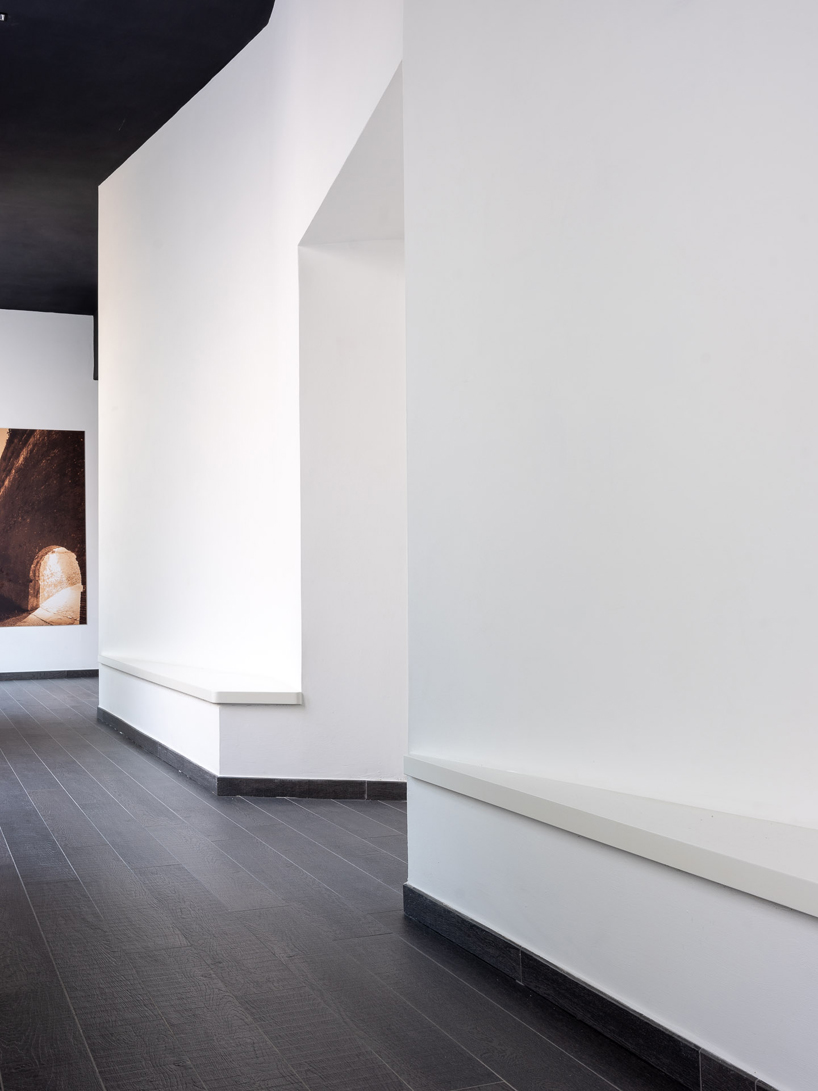
detail of the seats in the circulation corridor
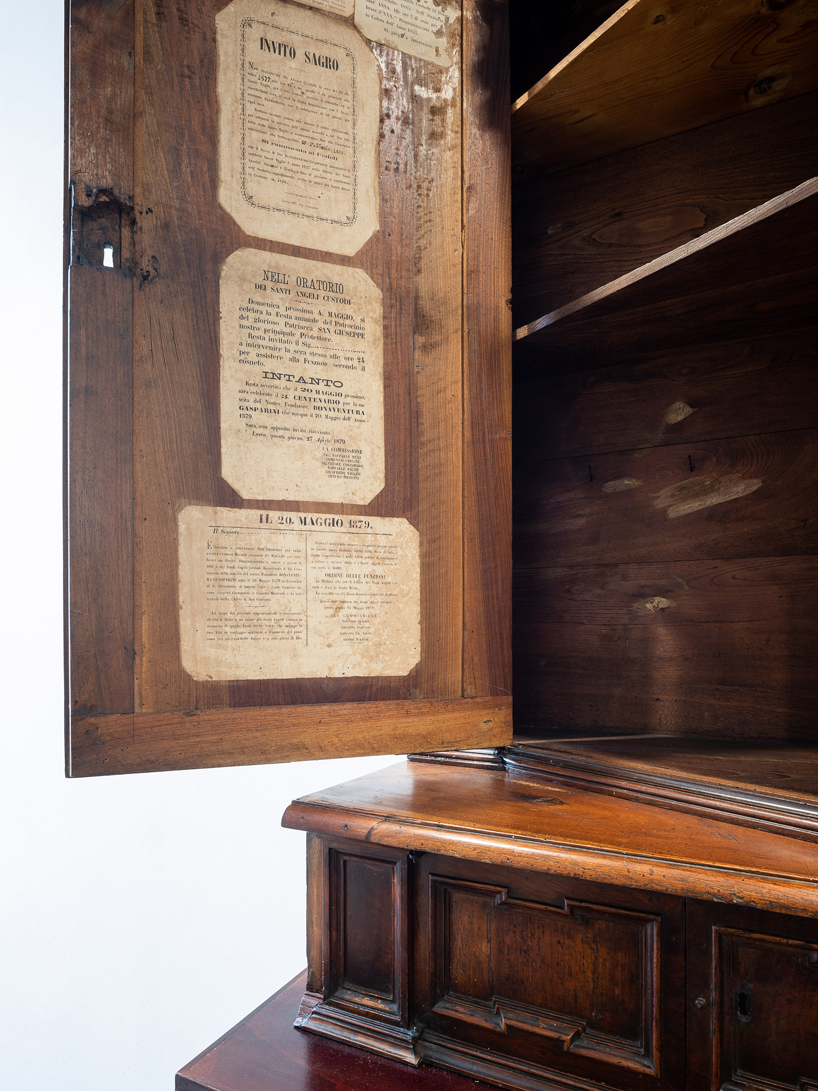
detail of one of the original sacred furnishings rearranged from the sacristy
project info:
project name: restoration and completion of the oratory of the guardian angels
location: lucca, italy
client: FCRLU
architectural design, restoration and installation: MICROSCAPE architecture urban design AA
director of works and safety: MICROSCAPE architecture urban design AA
contractors for the architectural and systems work: angelo impianti s.r.l., bonuccelli s.r.l., casanova next s.r.l., davini s.r.l., paladini s.r.l., s2 s.r.l., tecno service s.r.l.
companies for the restoration work: c. cannizzaro, e. modena, g. dalle monache, g. ghilardi, m.a. sebeti, l. lanciani (with c. spataro, r. maraccini, i. pini, n. pellicci, l. bertolozzi), lo studiolo di colombini, lazzareschi and ricciarelli
size: 9580 ft2 (890 m2)
planning: 2016
site work: 2016-2020
opening: june 2020
photography: filippo poli
designboom has received this project from our ‘DIY submissions‘ feature, where we welcome our readers to submit their own work for publication. see more project submissions from our readers here.
edited by: lynne myers | designboom
